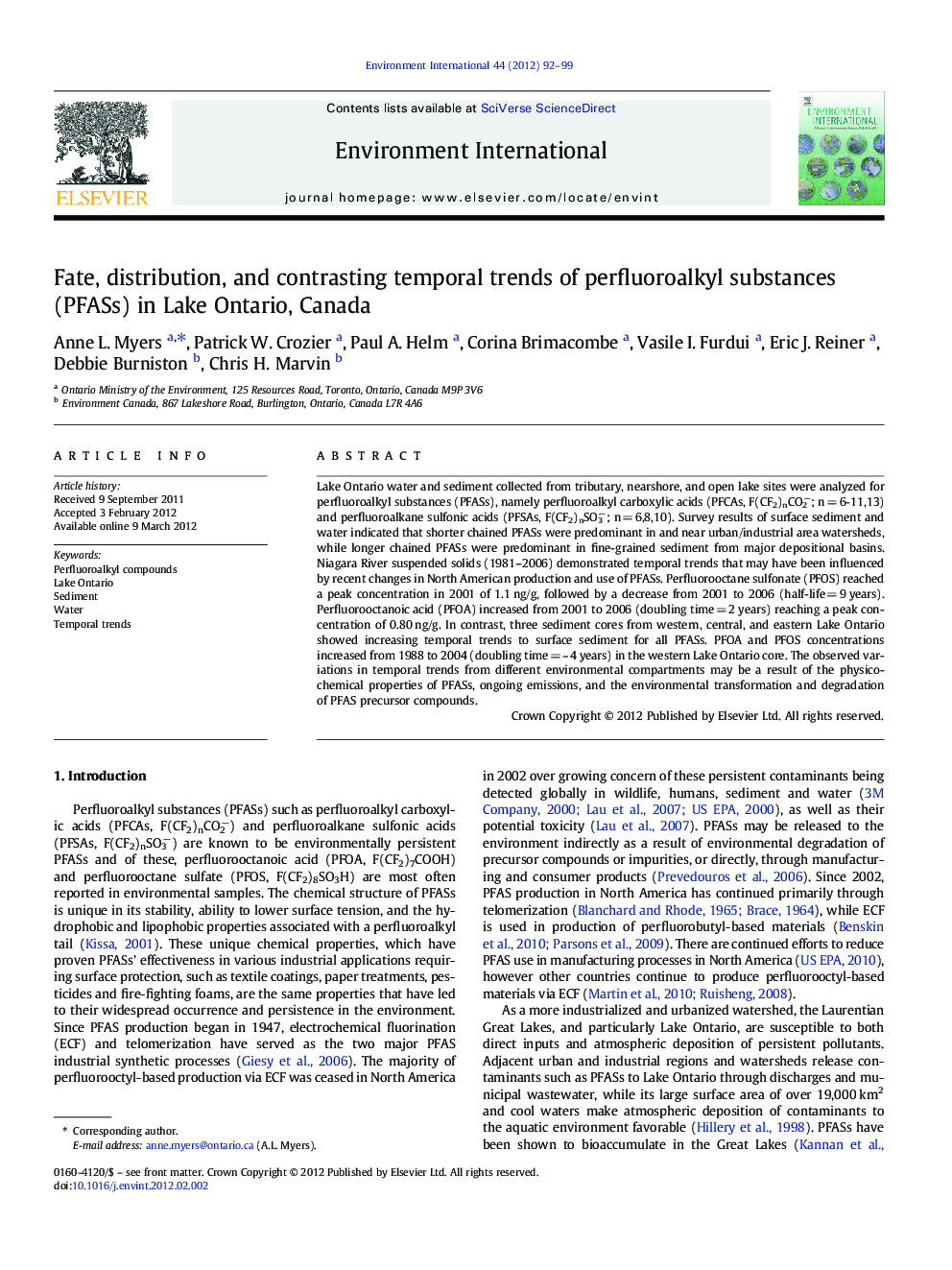| کد مقاله | کد نشریه | سال انتشار | مقاله انگلیسی | نسخه تمام متن |
|---|---|---|---|---|
| 4423080 | 1619083 | 2012 | 8 صفحه PDF | دانلود رایگان |

Lake Ontario water and sediment collected from tributary, nearshore, and open lake sites were analyzed for perfluoroalkyl substances (PFASs), namely perfluoroalkyl carboxylic acids (PFCAs, F(CF2)nCO2−; n = 6-11,13) and perfluoroalkane sulfonic acids (PFSAs, F(CF2)nSO3−; n = 6,8,10). Survey results of surface sediment and water indicated that shorter chained PFASs were predominant in and near urban/industrial area watersheds, while longer chained PFASs were predominant in fine-grained sediment from major depositional basins. Niagara River suspended solids (1981–2006) demonstrated temporal trends that may have been influenced by recent changes in North American production and use of PFASs. Perfluorooctane sulfonate (PFOS) reached a peak concentration in 2001 of 1.1 ng/g, followed by a decrease from 2001 to 2006 (half-life = 9 years). Perfluorooctanoic acid (PFOA) increased from 2001 to 2006 (doubling time = 2 years) reaching a peak concentration of 0.80 ng/g. In contrast, three sediment cores from western, central, and eastern Lake Ontario showed increasing temporal trends to surface sediment for all PFASs. PFOA and PFOS concentrations increased from 1988 to 2004 (doubling time = ~ 4 years) in the western Lake Ontario core. The observed variations in temporal trends from different environmental compartments may be a result of the physico-chemical properties of PFASs, ongoing emissions, and the environmental transformation and degradation of PFAS precursor compounds.
► Lake Ontario water and sediment were analyzed for perfluoroalkyl substances (PFASs).
► Shorter chain PFASs were predominant in sediment and water from urban watersheds.
► Longer chain PFASs were predominant in sediment from major depositional basins.
► Sediment core temporal trends contrasted those in Niagara River suspended solids.
► Temporal trends from a range of matrices should be considered in monitoring studies.
Journal: Environment International - Volume 44, 1 September 2012, Pages 92–99